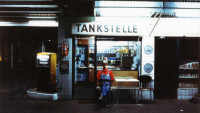Unsichtbare Tage oder Die Legende von den weißen Krokodilen Filming Locations

Where was Unsichtbare Tage oder Die Legende von den weißen Krokodilen filmed? Unsichtbare Tage oder Die Legende von den weißen Krokodilen was filmed in 3 locations across Germany in the following places:
Unsichtbare Tage oder Die Legende von den weißen Krokodilen Filming Locations
Germany is a Western European country with a landscape of forests, rivers, mountain ranges and North Sea beaches. It has over 2 millennia of history. Berlin, its capital, is home to art and nightlife scenes, the Brandenburg Gate and many sites relating to WWII. Munich is known for its Oktoberfest and beer halls, including the 16th-century Hofbräuhaus. Frankfurt, with its skyscrapers, houses the European Central Bank.
Berlin, Germany’s capital, dates to the 13th century. Reminders of the city's turbulent 20th-century history include its Holocaust memorial and the Berlin Wall's graffitied remains. Divided during the Cold War, its 18th-century Brandenburg Gate has become a symbol of reunification. The city's also known for its art scene and modern landmarks like the gold-colored, swoop-roofed Berliner Philharmonie, built in 1963.
Frankfurt, a central German city on the river Main, is a major financial hub that's home to the European Central Bank. It's the birthplace of famed writer Johann Wolfgang von Goethe, whose former home is now the Goethe House Museum. Like much of the city, it was damaged during World War II and later rebuilt. The reconstructed Altstadt (Old Town) is the site of Römerberg, a square that hosts an annual Christmas market.
Unsichtbare Tage oder Die Legende von den weißen Krokodilen (1991)
In her essay film, Eva Hiller illustrates the nightly infrastructure of a large city, using Frankfurt am Main and Berlin as examples. Just as pet reptiles gone feral are reported to populate New York's sewers, so too is there bustling activity - often invisible to outsiders - when darkness falls on Germany's metropolises. Invisible Days illustrates the ways in which that activity is linked to technocratic hierarchies on the one hand, and physical labor on the other, in an analogy with the behemoth machinery in Fritz Lang's Metropolis. Images of traffic control systems with their blinking circuits and automated sorting facilities are juxtaposed with observations of night-shift workers at Frankfurt airport or in an emergency room. Shots from sewage treatment plants and cable ducts, video stores and laundromats show the vast extent to which the empire of light keeps the central supply arteries functioning, thereby sustaining the municipal order even by night... Enhanced by critical commentary and narrative interpolations, Eva Hiller's brilliant montages illuminate the dark side of modernity: "It must be night for it to become day."
